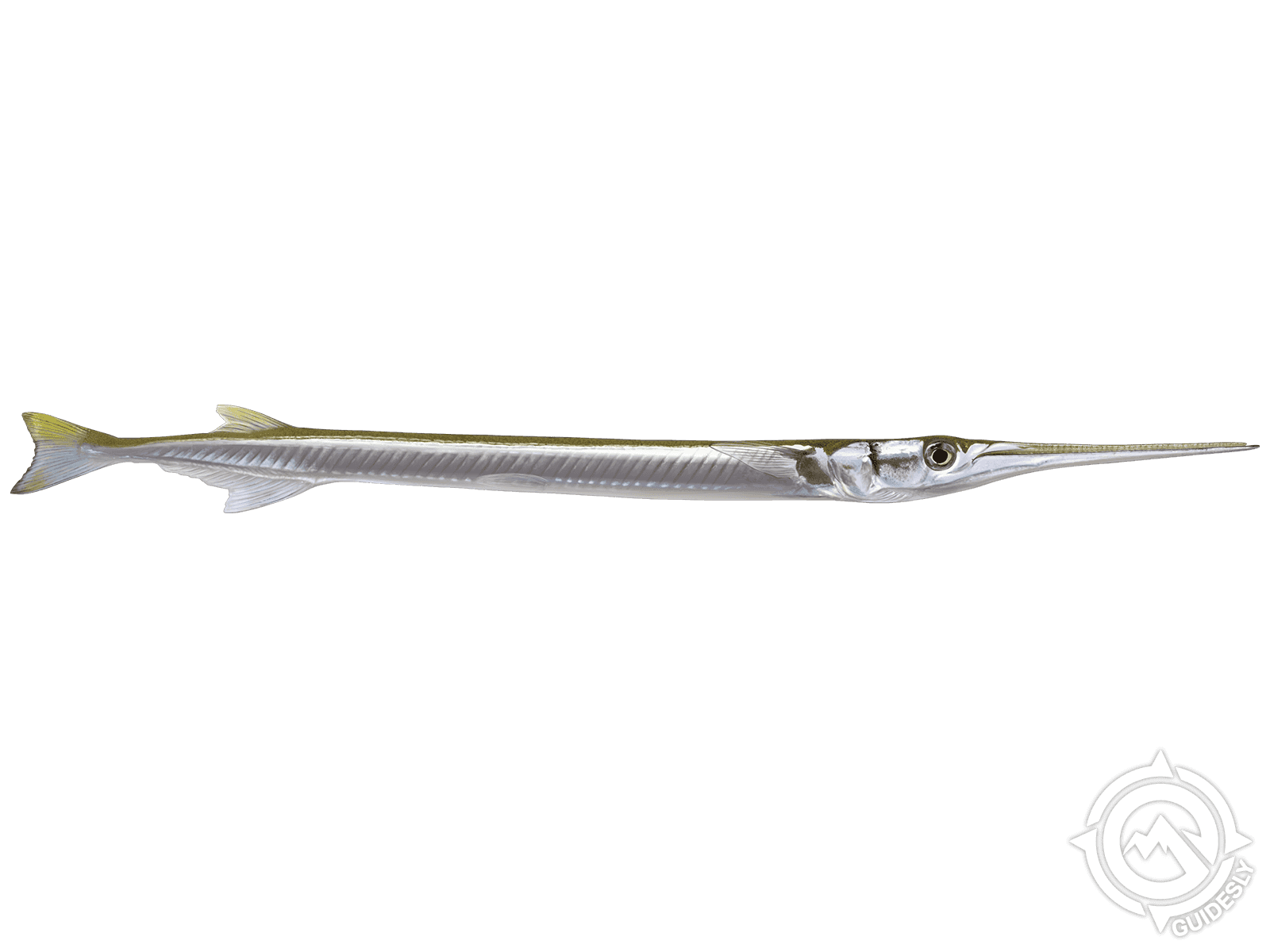Atlantic Needlefish

Species Details
Strongylura Marina
Belonidae
Beloniformes
Onshore, River, Nearshore, Offshore
1 - 5 lbs.
23" - 27"
Atlantic Needlefish (Strongylura Marina) Description
Although the Atlantic Needlefish is small, it’s still a fearsome predator. It has a long body and snout which allow it to dig through the plants for food. Because of its small size, the Atlantic Needlefish is often overlooked. However, they do have certain characteristics such as their light gold body. Their dorsal fin is parallel to their anal fin although the latter appears to be larger with more spines. Its tailfin has rounded edges and is shaped like a square.
The Atlantic Needlefish also has a black spot near its eye but it’s quite small and doesn’t extend to the middle of the eye. It appears to have two pairs of pectoral fins. One set is near its gills and the other one is positioned at the halfway point of its body. It has small, needle-like teeth that allow it to snag its prey.
Diet and Size
The Atlantic Needlefish has a preference for small fish. These small fishes can include anchovies and herring. They may also have a tendency to prey on juveniles that lurk within the seagrass and the seaweed. Atlantic Needlefishes also eat shrimps.
Atlantic Needlefishes are quite big. The common size however of an Atlantic Needlefish is around 23 inches but they can grow up to 43 inches. As for the weight, they can weigh up to a maximum of 5.07 lbs.
Interesting Facts about the Atlantic Needlefish
- The Atlantic Needlefish is a member of the Belone family. In Greek, Belone means “needle”.
- They are one of the most common fish next to the Mullet based on a study in Florida.
- In a recent study done in 2010, the Atlantic Needlefish have bright blue-green bones.
- Interesting considering that their bodies are normally bright gold.
- Atlantic Needlefishes are often the prey of the Atlantic Tarpon. Sometimes, they also get eaten by a Bottlenose Dolphin.
- Atlantic Needlefishes have a high tolerance for salty water.
- When anglers catch them, they often use them as bait.
Atlantic Needlefish – Fishing Techniques: How to Fish for an Atlantic Needlefish
When fishing for an Atlantic Needlefish, you’ll need a treble hook. A treble hook is perfect for their tiny mouths. Asides from that, their small mouths usually prefer smaller baits. So, go for something like cut bait made from squid and or fish. If hooks don’t work, try trolling by using fibers wherein the Atlantic Needlefish will get completely tangled up because of its voracious appetite.
When casting your line, make sure you cast it far. Then, reel it back as if it were running on water. Atlantic Needlefishes love a good chase. They don’t really respond to dead and drifting bait. They prefer bait that’s still alive and kicking. Once they do bite, wait for a few seconds. Atlantic Needlefish don’t bite. They swallow. These fish are the type to gulp down the bait. Once you feel that it does, jerk the rod back so it doesn’t have a chance to upchuck or let go of the bait.
Habitat and Distribution
Atlantic Needlefish aren’t too picky with where they are. They don’t often stay in ocean waters either. Atlantic Needlefishes do have a tendency to venture upstream to freshwater bodies. They usually stay in shallow waters along the Chesapeake Bay. However, some have sighted the Atlantic Needlefish also staying in the drainages of Sabine Lake. They also are found in the Tennessee River.
They do have a particular preference though for finding bodies of water with a lot of algae. The algae serve as their nest where they can lay their eggs. The tendrils of the eggs then attach to the algae so they don’t get washed away.






